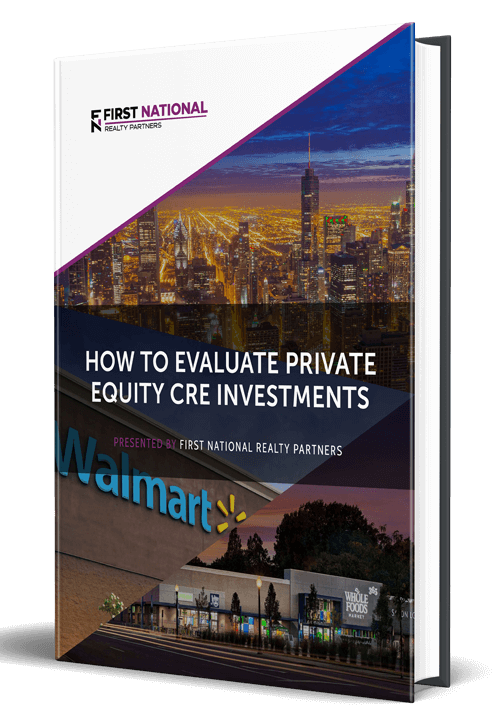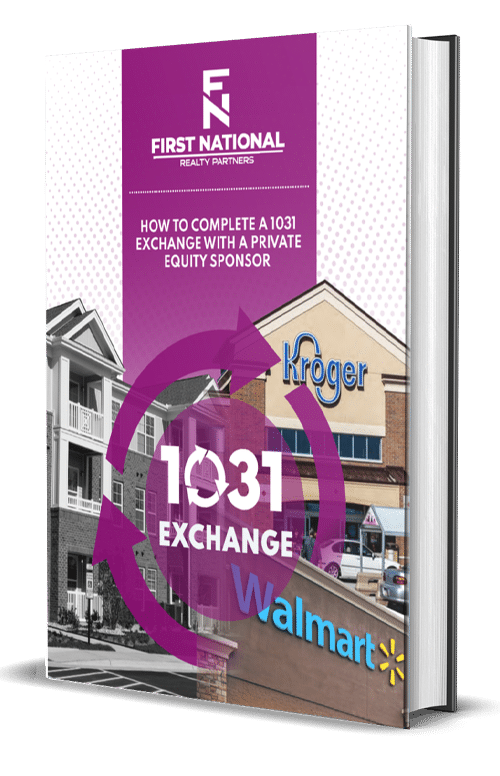Like other industries, the rise of the internet has had a substantial impact on nearly all aspects of the Commercial Real Estate (CRE) business. Driven by the proliferation of internet-based retailers, like Amazon, offering low prices and the convenience of home delivery, the impact has been particularly profound for retail real estate properties in the United States and their tenants whose businesses have been shuttered by the thousands.
In response to the changes, retail asset classes have been punished by the market with higher cap rates and retail property owners have been forced to rethink their tenant strategy to minimize vacancy and provide an offering commensurate with current trends. The exact changes and strategies vary by property owner and market,but we believe the strategy with the most promise – and staying power – is a sustained shift towards retail tenants who offer services, not products.
To make the case for service oriented retail real estate, it is first important to define exactly what a service oriented retail center is.
What is a Service Oriented Retail Center?
To define a service oriented retail center, it is easiest to break down the two components.
First, a retail center is a shopping center that focuses on leasing space to client-facing retail businesses like clothing or home accessories stores. The International Council of Shopping Centers categorizes retail centers into a number of groups, including:
- Regional & Super Regional Malls: General merchandise or fashion-oriented offerings. Typically, enclosed with inward-facing stores connected by a common walkway. Parking surrounds tFhe outside perimeter.
- Community & Neighborhood Centers: General merchandise or convenience-oriented offerings. The center is usually configured in a straight line as a strip, or may be laid out in an L or U shape, depending on the site and design.
- Strip / Convenience Centers: Attached row of stores or service outlets managed as a coherent retail entity, with on-site parking usually located in front of the stores. Open canopies may connect the store fronts, but a strip center does not have enclosed walkways linking the stores. A strip center may be configured in a straight line, or have an “L” or “U” shape. A convenience center is among the smallest of the centers, whose tenants provide a narrow mix of goods and personal services to a very limited trade area.
- Power Center: Category-dominant anchors, including discount department stores, off-price stores, or wholesale clubs, with only a few small tenants.
- Lifestyle Center: Upscale national-chain specialty stores with dining and entertainment in an outdoor setting.
- Factory Outlet: Manufacturers’ and retailers’ outlet stores selling brand name goods at a discount.
- Theme / Festival Center: Leisure, tourist, retail and service-oriented offerings with entertainment as a unifying theme. Often located in urban areas, they may be adapted from older–sometimes historic–buildings and can be part of a mixed-use project.
Regardless of the type, all of these centers have tenants, but the type varies. For example, malls tend to have a heavy focus on high fashion, discount fashion, books, electronics and department stores. Or, a power center may have large discount department stores, warehouse clubs, or home improvement outlets. Depending on the specific tenants, any of these centers could be service oriented. The key is a high concentration of tenants that offer services vs. tenants that offer products. For example, we like service oriented retailers in a few key categories like grocery stores, medical offices, boutique fitness gyms, and quick service restaurants.
In the internet age, service-oriented retail businesses have proven to be remarkably resistant to e-commerce driven change and the retail centers that contain them tend to maintain higher occupancy rates and lower turnover than their product based peers.
The Case for Service-Oriented Retail Investments
Despite the general retail headwinds,we believe that well placed, and thoughtfully curated, service-based retail centers present an attractive investment opportunity based on the premise that a medical checkup, personal training session, or haircut can’t be “experienced” online. They require that a person be physically present and we think that the businesses that offer these retail services will continue to thrive for tenants, investors, and property owners as we find ourselves in an increasingly digital world. We believe that these types of service provider tenants can drive a large amount of foot traffic, which will in turn attract high quality tenants to the property.
This investment thesis is further supported by the following:
- “Guilt by Association:” While it’s undeniable that e-commerce has exacted a significant toll on local retail businesses, the impact hasn’t been felt equally. For example, shopping malls with department store anchors have struggled in recent years while grocery stores and boutique fitness studios have thrived. We believe that destination or service-oriented retail assets have been deemed “guilty by association” with the broader retail space category and that their higher cap rates represent a value play for long term investors.
- Stability of National Tenants: We think that Credit Tenant anchored retail centers with complementary service-oriented retailers are particularly attractive. When it’s time to sell the commercial property, we think they’ll command higher valuations, lower cap rates, and will be especially attractive to institutional investors.
- Long Term Leases: Because retail leases often carry longer terms than their office or multifamily counterparts, retail shopping centers are less prone to the disruptions caused by vacancy and tenant turnover. For retail centers with financially sound tenants, the leases create long term, stable streams of income.
- NNN Leases: A triple net lease (NNN) means that the tenant is responsible for the rent and the operating expenses associated with the property. They are common with many service-oriented retailers and we think that their limited maintenance requirements generate portfolio efficiencies. In addition, service-oriented centers with NNN leases tend to be more marketable than those without.
- Management Efficiency: In our decades of commercial real estate experience, we’ve found that there’s an efficiency in managing retail shopping centers that make scaling a portfolio easier. Purchasing multiple centers, especially in the same market, can provide economies of scale, creating a profitable opportunity to build a portfolio of service-based retail centers.
Combined, these factors drive our retail acquisition strategy, which is to pursue value-add shopping centers whose tenants are either service-oriented or experiential retail businesses.
Risk Considerations
Although we believe that the service-oriented retail opportunity is substantial, it is not without risk. Consumers have notoriously fickle tastes that can dramatically change the retail landscape in a short period of time. In addition, there are other risks that must be carefully considered including:
- Real Estate Market: For retail investments, location is perhaps the most critical aspect of the purchase. However, locations can change and the long term success of a retail property is directly correlated with the supply and demand characteristics of the surrounding neighborhood, which can change significantly over time. It’s important to invest in communities with a track record of growth, stability, and support for service-oriented retail businesses.
- Trends and Fads: More than other industries, the retail business is particularly susceptible to short-lived trends and fads. As such, it’s important to purchase properties with tenants who have a track record of longevity and stability. For example, from the early to mid-2000s, there was a run of frozen yogurt store concepts. They were successful for a while, but ultimately proved to be a fad without longevity. Compare this to a grocery store which has always been, and will always be, needed.
- Holding Period: For a profitable exit, a retail investment requires a lengthy holding period, often 10 years of more. But, a lot can change in 10 years and the success of the investment can be negatively impacted by broader macroeconomic trends over that time. For example, in a worst case scenario, a property could be purchased at full occupancy near the top of a market, but a recession late in the holding period could drive increased vacancy. At this point, a decision would have to be made to either sell the property into a down market or extend the planned holding period until a rebound is expected. This could be years.
To mitigate these risks, we rely on our decades of expertise in finding, selecting, and managing retail assets through all phases of the economic cycle.
Interested in Learning More?
First National Realty Partners is one of the country’s leading private equity commercial real estate investment firms. With an intentional focus on finding world-class, multi-tenanted assets – including service-oriented retail shopping centers – well below intrinsic value, we seek to create superior long-term, risk-adjusted returns for our investors while creating strong economic assets for the communities we invest in.
We like service-oriented centers for all of the reasons described above and have leveraged this investment thesis to create a sustained track record of success. Whether you’re just getting started or searching for ways to diversify your portfolio, we’re here to help. If you’d like to learn more about our retail investment opportunities, contact us at (800) 605-4966 or send us an email at info@fnrpusa.com for more information.






